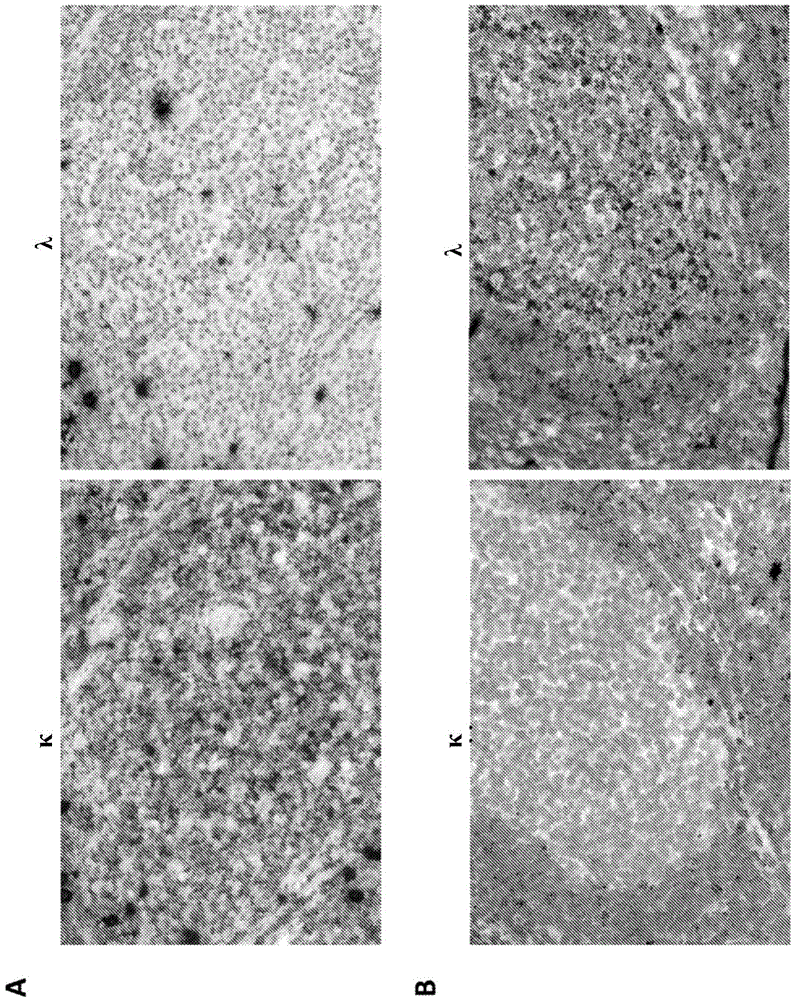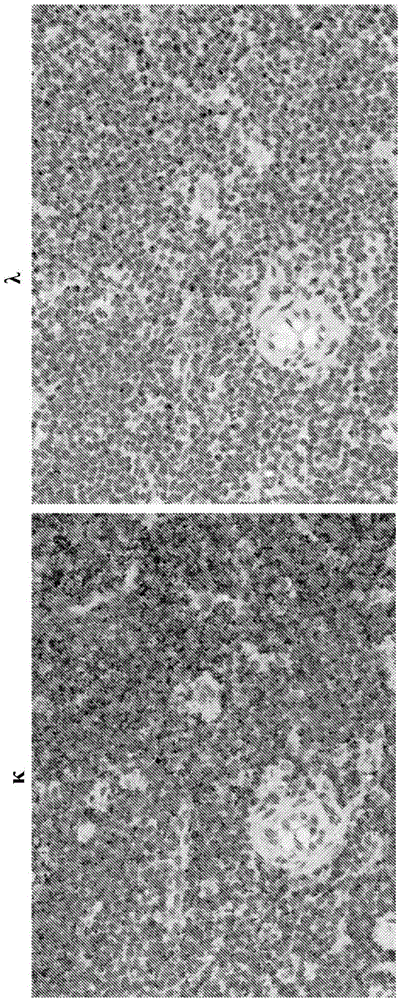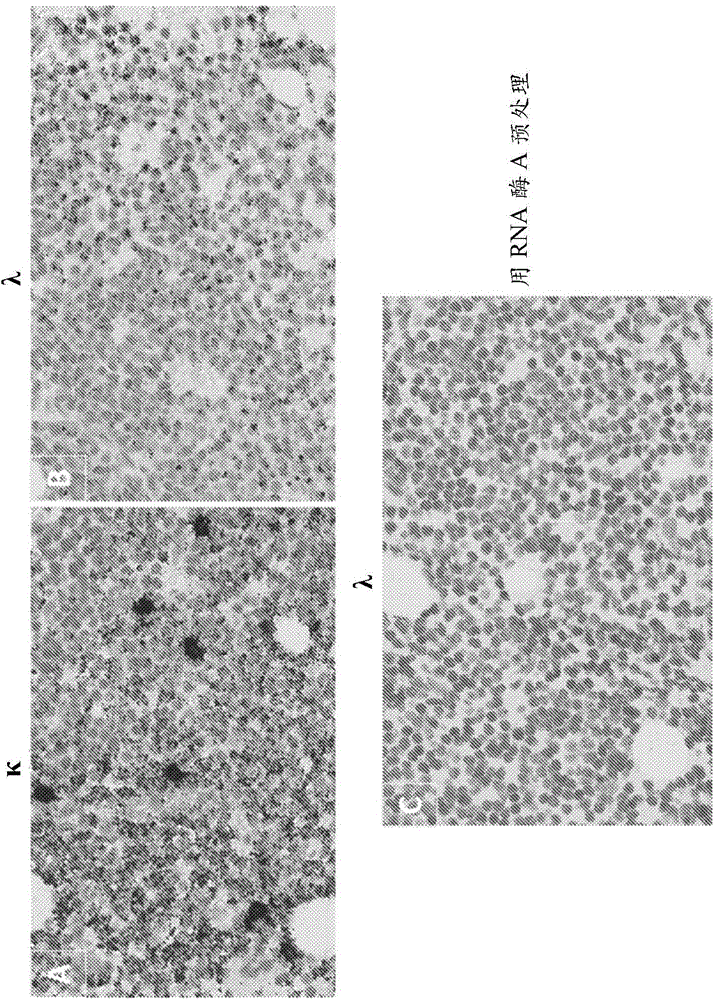Detection of immunoglobulin light chain restrication by rna in situ hybridization
A technique of immunoglobulin and in situ hybridization, applied in the filed U.S. Provisional Application Serial No. 61
Inactive Publication Date: 2015-05-13
ADVANCED CELL DIAGNOSTICS INC +1
View PDF21 Cites 0 Cited by
- Summary
- Abstract
- Description
- Claims
- Application Information
AI Technical Summary
Problems solved by technology
However, autoradiographic signals take two weeks or more to develop (Segal et al., supra, 1994), and this delay is unacceptable for clinical control
Method used
the structure of the environmentally friendly knitted fabric provided by the present invention; figure 2 Flow chart of the yarn wrapping machine for environmentally friendly knitted fabrics and storage devices; image 3 Is the parameter map of the yarn covering machine
View moreImage
Smart Image Click on the blue labels to locate them in the text.
Smart ImageViewing Examples
Examples
Experimental program
Comparison scheme
Effect test
Embodiment
[0120] Detection of Immunoglobulin Light Chain Restriction in B Cells Using In Situ Hybridization
the structure of the environmentally friendly knitted fabric provided by the present invention; figure 2 Flow chart of the yarn wrapping machine for environmentally friendly knitted fabrics and storage devices; image 3 Is the parameter map of the yarn covering machine
Login to View More PUM
 Login to View More
Login to View More Abstract
The invention provides a method for detecting immunoglobulin light chain restriction and clonality in B cells by obtaining a sample of B cells from a subject; conducting a duplex in situ hybridization assay on the sample using (i) at least one probe set which is designed to specifically hybridize to immunoglobulin kappa chain constant region (IGKCR) RNA; and (ii) at least one probe set which is designed to specifically hybridize to immunoglobulin lambda chain constant region (IGLCR) RNA; detecting signal associated with hybridized IGKCR probe and signal associated with hybridized IGLCR probe in a population of B cells in the sample; and determining a pattern of signal associated with hybridized IGKCR probe and hybridized IGLCR probe within individual cells in the B cell population, wherein the pattern of signal within individual cells indicates the presence or absence of light chain restriction and clonality of the B cells.
Description
[0001] This application claims priority to U.S. Application Serial No. 13 / 843408, filed March 15, 2013, and U.S. Provisional Application Serial No. 61 / 620634, filed April 5, 2012, and 2012 Priority to U.S. Provisional Application Serial No. 61 / 717064, filed October 22, each of which is hereby incorporated by reference in its entirety. [0002] This invention was made with government support under Grant No. R43CA168019 awarded by the National Cancer Institute. The government has certain rights in this invention. Background technique [0003] The present invention relates generally to in situ hybridization assays, and more particularly to assays for diagnosing B cell neoplasms. [0004] Immunoglobulins are composed of two heavy chains and two light chains. During B-cell differentiation, DNA encoding immunoglobulin genes undergoes rearrangements to produce a unique combination of immunoglobulin domains with a greater diversity of possible immunoglobulins available to an individ...
Claims
the structure of the environmentally friendly knitted fabric provided by the present invention; figure 2 Flow chart of the yarn wrapping machine for environmentally friendly knitted fabrics and storage devices; image 3 Is the parameter map of the yarn covering machine
Login to View More Application Information
Patent Timeline
 Login to View More
Login to View More Patent Type & Authority Applications(China)
IPC IPC(8): C12Q1/68
CPCC07K16/00C12Q1/6881C12Q1/6886C12Q2600/158C07K2317/515C12Q2600/112
Inventor 马小骏罗宇龄雷蒙德·塔布斯
Owner ADVANCED CELL DIAGNOSTICS INC
Who we serve
- R&D Engineer
- R&D Manager
- IP Professional
Why Patsnap Eureka
- Industry Leading Data Capabilities
- Powerful AI technology
- Patent DNA Extraction
Social media
Patsnap Eureka Blog
Learn More Browse by: Latest US Patents, China's latest patents, Technical Efficacy Thesaurus, Application Domain, Technology Topic, Popular Technical Reports.
© 2024 PatSnap. All rights reserved.Legal|Privacy policy|Modern Slavery Act Transparency Statement|Sitemap|About US| Contact US: help@patsnap.com










